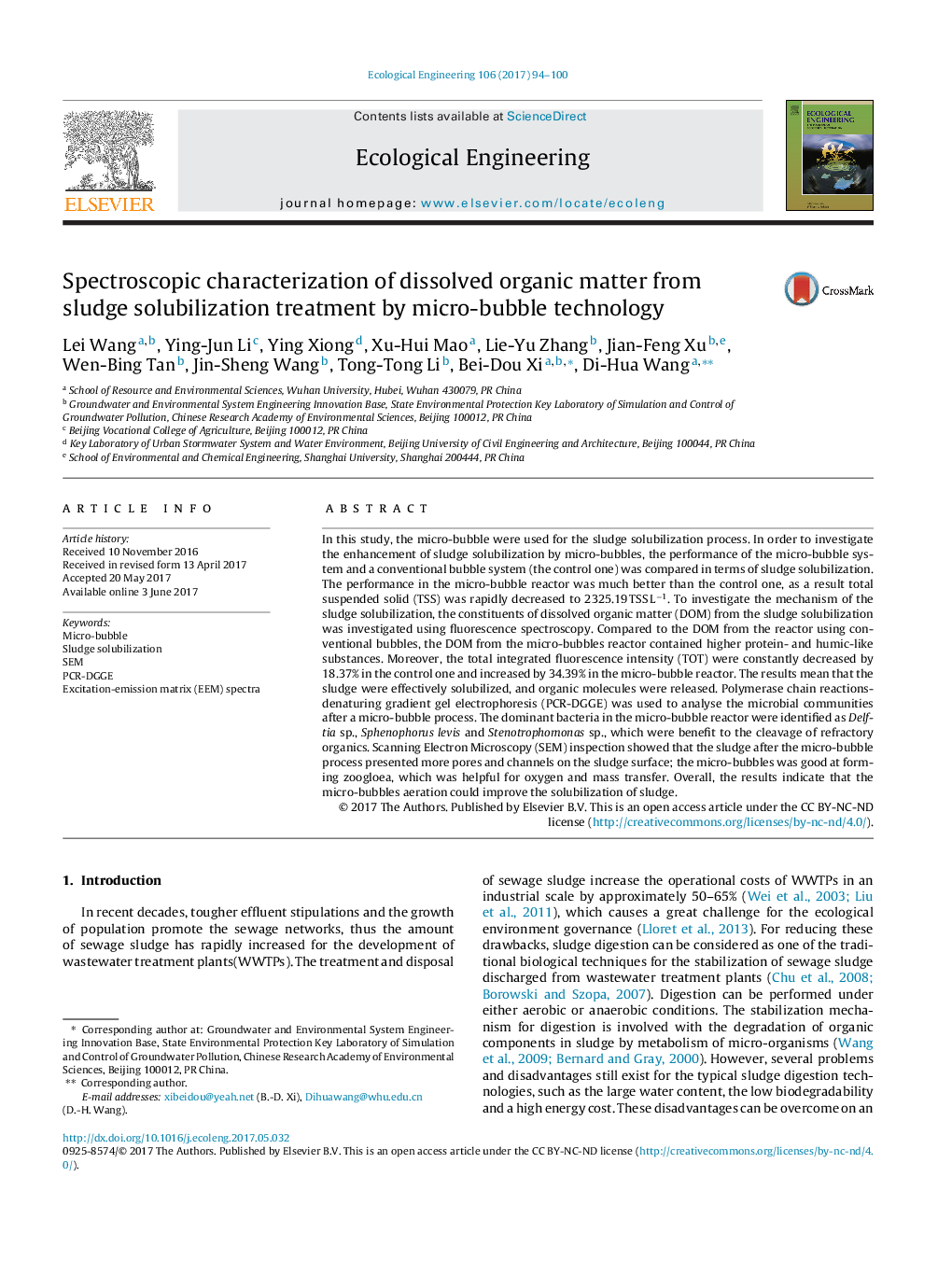| Article ID | Journal | Published Year | Pages | File Type |
|---|---|---|---|---|
| 5743826 | Ecological Engineering | 2017 | 7 Pages |
In this study, the micro-bubble were used for the sludge solubilization process. In order to investigate the enhancement of sludge solubilization by micro-bubbles, the performance of the micro-bubble system and a conventional bubble system (the control one) was compared in terms of sludge solubilization. The performance in the micro-bubble reactor was much better than the control one, as a result total suspended solid (TSS) was rapidly decreased to 2325.19Â TSSÂ Lâ1. To investigate the mechanism of the sludge solubilization, the constituents of dissolved organic matter (DOM) from the sludge solubilization was investigated using fluorescence spectroscopy. Compared to the DOM from the reactor using conventional bubbles, the DOM from the micro-bubbles reactor contained higher protein- and humic-like substances. Moreover, the total integrated fluorescence intensity (TOT) were constantly decreased by 18.37% in the control one and increased by 34.39% in the micro-bubble reactor. The results mean that the sludge were effectively solubilized, and organic molecules were released. Polymerase chain reactions-denaturing gradient gel electrophoresis (PCR-DGGE) was used to analyse the microbial communities after a micro-bubble process. The dominant bacteria in the micro-bubble reactor were identified as Delftia sp., Sphenophorus levis and Stenotrophomonas sp., which were benefit to the cleavage of refractory organics. Scanning Electron Microscopy (SEM) inspection showed that the sludge after the micro-bubble process presented more pores and channels on the sludge surface; the micro-bubbles was good at forming zoogloea, which was helpful for oxygen and mass transfer. Overall, the results indicate that the micro-bubbles aeration could improve the solubilization of sludge.
